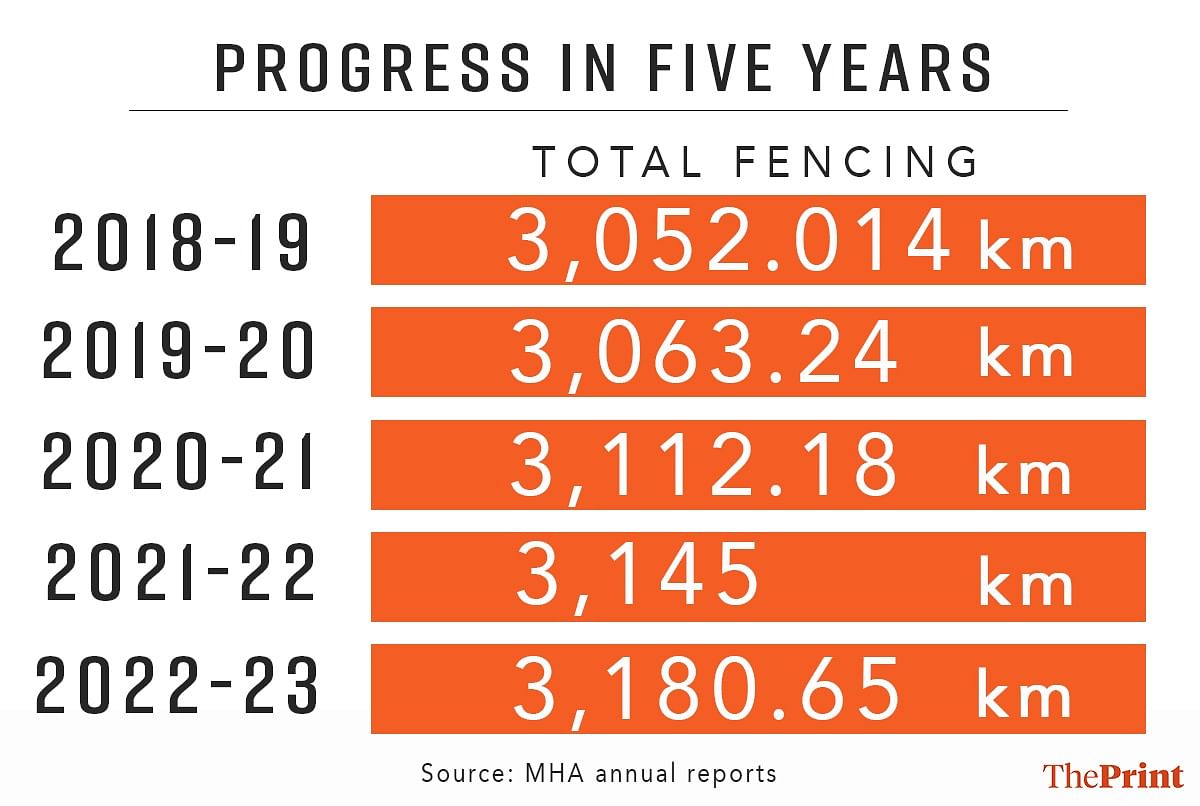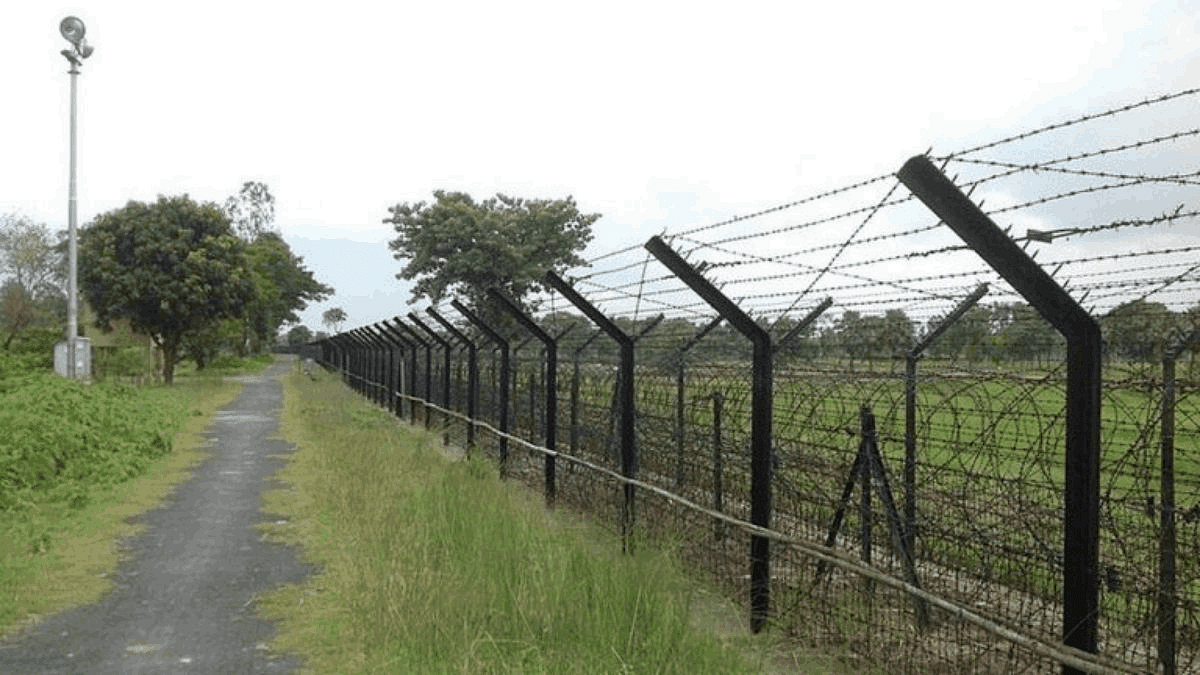On its part, the MHA has cited geographical as well as bureaucratic reasons for delays in the fencing of the border. “There have been some problems in the construction of fencing in certain stretches on this border due to riverine/low lying areas, habitations close to the border, pending land acquisition cases and protests by the border population, which delay the completion of the project,” the ministry has said in its last few annual reports.
Of the total length of India’s border with Bangladesh, 2,216.7 km is in West Bengal, 856 km in Tripura, 443 km in Meghalaya, 318 km in Mizoram and 263 km in Assam.
It is not clear from the MHA reports how much of the remaining 915.35km border length will be covered by physical fencing and what part will be covered through non-physical means — in the form of technology such as infrared rays, laser rays or surveillance.
ThePrint has sent a detailed questionnaire to the Border Management-I Division, asking if the deadline can still be met and about the reasons for the extensions. This report will be updated if and when they respond.
Also read: Ahead of 2024, Modi govt looks to expand reach of scheme for urban poor
Progress or lack of it?
The fencing work began in a phased manner and it covered 854 km in 1989-99, according to the Journal of Borderland Studies, a peer-reviewed academic journal, but media reports suggest that those were ineffective and migration continued into different parts of Northeast India. The second phase of fencing began 2000, according to the journal.
A look at the ministry’s annual reports reveals that the progress has been slow since, and deadlines extended every year. According to the MHA report of 2015-16, for instance, fencing along 2,710.02 km was completed by December 2015 and the deadline to conclude the remaining work was set for March 2019.

In the 2018-19 report, the MHA said fencing by physical barriers was completed along 3,052.014 km. The deadline to complete the remaining work was set for March 2020.
In 2019-20, the numbers rose to 3,063.24 km — meaning fencing of only 11.226 km was done that year. The deadline, once again, for the rest of the work was extended to December 2020.
The report that year also said that the government was mulling resorting to technological options where physical fencing of borders was not “feasible”. It said that there was a plan to bring in a new design fence with anti-cut, anti-rust and anti-climb features.
The fencing work picked up pace next year — 48.94 km of the border was covered that year, taking the total coverage to 3,112.18 km. The deadline to complete the rest was March 2021.
In 2021-22, the fencing work remained sluggish and it could reach only 3,145 km, meaning fencing by physical barriers could be done only along 32.82 km during that period. However, this time, the deadline for the completion of fencing through either physical or non-physical barriers was extended not by a year but rather to March 2024.
‘Land acquisition, bureaucratic delays’
The issue of land acquisition has been a bone of contention between the central government and states with international borders.
The MHA has repeatedly highlighted delays in land acquisition as one of the factors slowing down fencing, something echoed by experts as well.
Pushpita Das, a research fellow with the Manohar Parrikar Institute for Defence Studies and Analyses, said clearances from different departments of central ministries also play a major role.
“Land acquisition has been a major problem as at state level, they lack required manpower and expertise, and hence there is poor upkeep of land records. Agencies responsible for fencing also require certain clearances from various Union ministries, and it takes time for projects to go ahead,” said Das.
She added that fencing work is required at nearly 75-80 percent of the border between India and Bangladesh.
“The remaining 20 percent of areas can’t be fenced by physical barriers and you need the help of technology, such as sensors and cameras, to keep track of movement. The issue is not technology but high price and poor track records such as at the US-Mexico border and it does not paint a good picture. India needs inexpensive and properly tested technological systems at the border where physical fencing is not feasible,” said Das.
Also, while states are responsible for land acquisition, poor infrastructure delays the process. For instance, in 2018, the West Bengal government approved acquisition of land for border fencing after a request from the then home minister, Rajnath Singh, to expedite the process. The approval from the Mamata Banerjee-led government, show media reports, came two years after the initial proposal by the central government for 300 acres of land in the state.
(Edited by Smriti Sinha)
Also read: War heroes to NEP, govt plans mobile, web games on ‘national interest themes’ for civic engagement

